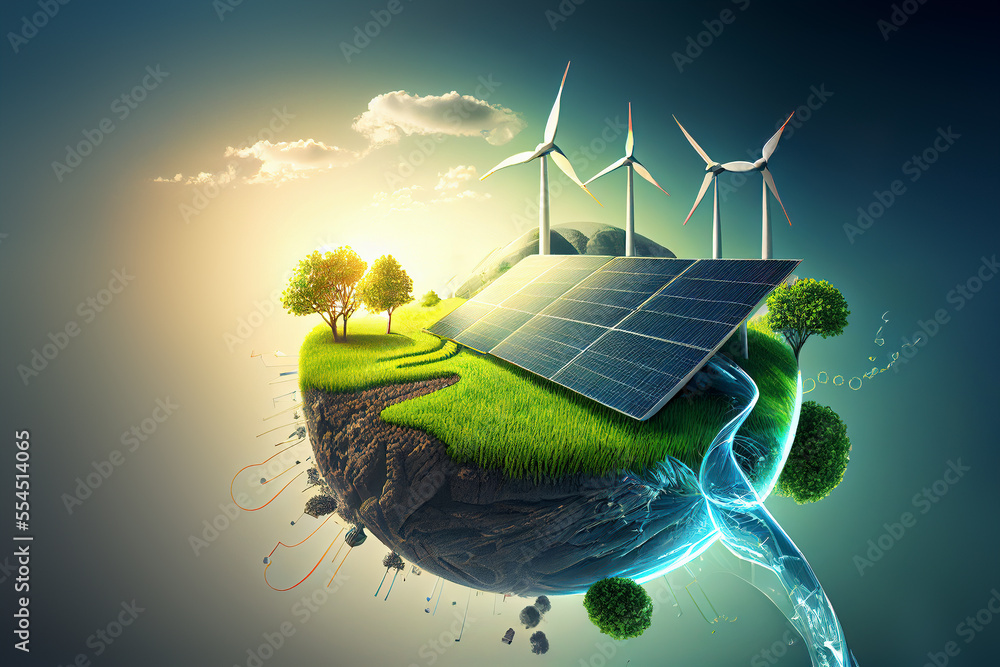As we stand on the precipice of an unparalleled energy crisis, it becomes increasingly imperative to scrutinize the potential avenues for harnessing sustainable energy solutions. The world finds itself grappling with the dire consequences of unabated fossil fuel consumption, from climate change to ecological degradation. Amidst this tumultuous backdrop, a pressing inquiry emerges: What innovative and future-oriented fuels could substantiate a sustainable energy paradigm for our beleaguered planet?
The quest for alternative energy solutions is not merely a modern endeavor; it is rooted in centuries of scientific exploration and technological innovation. Historically, the reliance on carbon-intensive energy sources has contributed to the gradual escalation of atmospheric greenhouse gases. As the planet’s temperature continues to rise, the climate clock ticks ominously. Thus, addressing this existential challenge necessitates a multi-faceted approach that integrates renewable energy sources, advances in energy storage, and the cultivation of a circular economy.
In contemplating potential challenges, one might wonder: can humanity strike a harmonious balance between technological advancement and ecological preservation? The answer lies within the exploration of various renewable energy modalities, each presenting unique advantages and disadvantages. Solar energy, for instance, offers an abundant resource, harnessed through photovoltaic cells. Yet, what are the implications of the materials utilized in solar panel production? Similarly, wind energy exhibits remarkable potential; however, how do we mitigate the impact on avian biodiversity and local ecosystems? Such inquiries compel us to reflect on both the benefits and challenges of these energy sources.
Moreover, the pivot towards renewable energy solutions transcends mere technological application. It necessitates a cultural shift towards sustainability. Enhanced public awareness regarding energy consumption patterns and their ramifications can precipitate significant behavioral changes. For instance, community initiatives aiming to reduce energy footprints can complement governmental policies promoting renewable energy infrastructure. Herein lies a pivotal conundrum: How do we engender widespread commitment to sustainable practices amidst prevailing consumeristic tendencies?
As myriad countries grapple with these existential dilemmas, several promising avenues for future fuels emerge. One such avenue is bioenergy, which relies on organic materials, such as agricultural waste and dedicated energy crops. The transformative potential of biofuels, particularly biodiesel and bioethanol, is underpinned by their ability to reduce greenhouse gas emissions compared to conventional fossil fuels. However, the challenge of optimizing land use remains paramount. If agricultural lands are repurposed for energy cultivation, what repercussions may ensue for food security?
Another salient contender in the future fuels repertoire is hydrogen. Often dubbed the “fuel of the future,” hydrogen exhibits remarkable promise, especially when produced via electrolysis of water utilizing renewable energy sources—termed green hydrogen. The significance of this process lies in its potential to decarbonize sectors that are notoriously difficult to electrify, such as heavy-duty transportation and industrial manufacturing. Nevertheless, the infrastructural investments required to develop hydrogen distribution networks pose a considerable barrier to its widespread adoption.
Moreover, emerging technologies such as carbon capture and storage (CCS) are pivotal in the discourse surrounding future fuels. By capturing CO2 emissions from industrial sources before they enter the atmosphere and storing them underground, CCS presents a viable strategy to mitigate climate change impacts. Nonetheless, the commercial viability and scalability of such technologies remain contentious issues. Can society afford the economic investments necessary to ensure their efficacy, particularly in an era marked by fiscal austerity?
Inextricably linked to these considerations are the crucial components of energy storage and grid management. As intermittent energy sources like solar and wind generate power that is not always available on demand, advancements in battery storage technology have become indispensable. Cutting-edge developments in lithium-ion batteries, as well as alternative chemistries such as solid-state batteries, could significantly enhance energy reliability and efficacy. However, what environmental costs are incurred through the mining and production of these advanced materials?
The contemporary energy transition inevitably intertwines with sociopolitical ramifications, thereby amplifying the urgency to foster equitable access to energy resources. Underprivileged communities often bear the brunt of energy poverty, exacerbating social disparities. As a consequence, ensuring that the shift towards renewable energy does not perpetuate existing inequities is paramount. How can policymakers develop frameworks that facilitate a just transition, enabling marginalized groups to participate in and benefit from the burgeoning clean energy economy?
As exploration of these compelling questions continues, it becomes increasingly evident that the challenges confronting future fuels extend beyond technical feasibility. The interplay between technological advancement, policy reform, and cultural reorientation will ultimately dictate the trajectory of energy solutions. A comprehensive approach that recognizes the complexity of the energy system and cultivates resilient, inclusive strategies will be essential in confronting the multifaceted challenges ahead.
In conclusion, the quest for future fuels is not solely a technological endeavor but an intricate interplay of innovation, sustainability, and social justice. The imperative for action is now, as the ramifications of inaction will reverberate across generations to come. Visionaries in the fields of science, technology, and policy must collaboratively navigate this critical juncture, forging pathways towards a sustainable energy future that harmonizes human need with planetary health. Consequently, the answer to our initial inquiry may lie within our collective capacity for creativity, accompanied by a resolute commitment to fostering a sustainable world for all.












